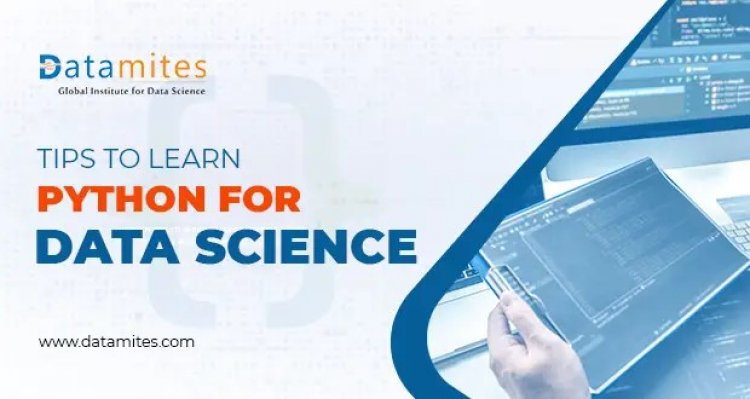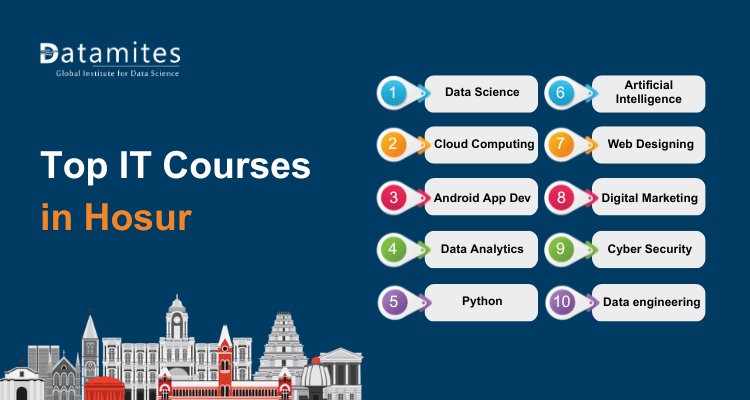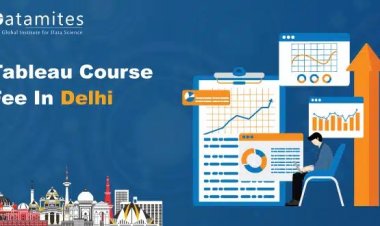Tips to learn Python for Data Science?
Learn Python for Data Science by mastering key libraries like Pandas, NumPy, and Matplotlib. Start with small projects, practice coding regularly, and explore real-world datasets to build your skills.

Important Things to Learn in Python for Data Science.
Tip 1: Learn Core Python Concepts
The first step is to learn Python programming basics. Also, learn an introduction to data science.
One of the important tools you should start using early in your journey is Jupyter Notebook, which comes pre-packaged with Python libraries to help you learn these two things.
Effective programming is not about memorizing syntax, but rather mastering a new way of thinking.
Therefore, take your time in building a solid foundation of core programming concepts. These will help you translate solutions in your head into instructions for a computer.
If you are new to programming
If you are entirely new to programming, go through the books and online documentation to have a deep understanding of the concepts.
Kickstart your learning by Joining a community
By joining a community, you will put yourself around like-minded people and increase your opportunities for employment. According to the Society for Human Resource Management, employee referrals account for 30% of all hires.
Create a Kaggle account, join a local Meetup group, and participate in the learner community for more interaction with Python programmers.
Tip 2: Practice Mini Python Projects
Honestly believe in hands-on learning. You may be surprised by how soon you will be ready to build small Python projects.
A guide to Python projects for beginners, which includes ideas like:
Tracking and Analyzing, Spending Habits
- A fun project that will help you practice Python and pandas basics while also giving you some real insight into your personal finance.
Analyze Data from a Survey
- Building mini-projects will help you learn Python. programming projects are standard for all languages, and a great way to solidify your understanding of the basics.
- You should start to build your experience with APIs and begin web scraping. Beyond helping you learn Python programming, web scraping will be useful for you in gathering data later.
- Fastrack your learning by Reading
- Enhance your coding skill and find answers to the Python programming challenges you encounter. Read guidebooks, blog posts, and even other people’s open-source code to learn Python and data science best practices and get new ideas.
Tip 3: Learn Python Data Science Libraries
Unlike some other programming languages, in Python, there is generally the best way of doing something with packages. The three best and most important Python libraries for data science are NumPy, Pandas, and Matplotlib.
NumPy — A library that makes a variety of mathematical and statistical operations easier; it is also the basis for many features of the panda’s library.
pandas — A Python library created specifically to facilitate working with data, this is the bread and butter of a lot of Python data science work.
Matplotlib — A visualization library that makes it quick and easy to generate charts from your data.
scikit-learn — The most popular library for machine learning work in Python.
Fastrack your learning by Asking questions
You don’t know! what you don’t know?
Python has a rich community of experts who are eager to help you learn Python. Resources like Quora, Stack Overflow, and Dataquest’s learner community are full of people excited to share their knowledge and help you learn Python programming. You can find many projects in Github.
Tip 4: Build a Data Science Portfolio as you Learn Python
For aspiring data scientists, a portfolio is a must.
These projects should include work with several different datasets and should leave readers with interesting insights that you have cleaned. Some types of projects to consider:
Data Cleaning Project — Any project that involves dirty or “unstructured” data that you clean up and analyze will impress potential employers since most real-world data is going to require cleaning.
Data Visualization Project — Making attractive, easy-to-read visualizations is both a programming and a design challenge, but if you can do it right, your analysis will be considerably more impactful. Having great-looking charts in a project will make your portfolio stand out.
Machine Learning Project — If you aspire to work as a data scientist, you definitely will need a project that shows off your ML chops (and you may want a few different machine learning projects, with each focused on your use of a different popular algorithm).
Your analysis should be presented clearly and visually; ideally in a format like a Jupyter Notebook so that technical folks can read your code, but non-technical people can also follow along with your charts and written explanations.
Your portfolio does not necessarily need a particular theme. Find datasets that interest you, then come up with a way to put them together. However, if you aspire to work at a particular company or industry, showcasing projects relevant to that industry in your portfolio is a good idea.
Displaying projects like these gives fellow data scientists an opportunity to potentially collaborate with you and shows future employers that you have truly taken the time to learn Python and other important programming skills.
One of the nice things about data science is that your portfolio doubles as a resume while highlighting the skills you have learned, like Python programming.
Related skills: Learn beginner and intermediate statistics
While learning Python for data science, you will also want to get a solid background in statistics. Understanding statistics will give you the mindset you need to focus on the right things, so you will find valuable insights (and real solutions) rather than just executing code.
Tip 5: Apply Advanced Data Science Techniques
Finally, aim to sharpen your skills. Your data science journey will be full of constant learning, but there are advanced courses you can complete to ensure you have covered all the bases.
You will want to be comfortable with regression, classification, and k-means clustering models. You can also step into machine learning – bootstrapping models and creating neural networks using scikit-learn.
At this point, programming projects can include creating models using live data feeds. Machine learning models of this kind adjust their predictions over time.
Data science is an ever-growing field that spans numerous industries.
At the rate that demand is increasing, there are exponential opportunities to learn. Continue reading, collaborating, and conversing with others, and you are sure to maintain interest and a competitive edge over time.
DataMites offers expert-level Python training, equipping you for real-world software development and data analysis. The course covers essential Python concepts, hands-on projects, and practical applications. With certification from IABAC and NASSCOM FutureSkills, DataMites stands as a leader in Python education. With over 10 years of experience, the institute has successfully trained more than 100,000 learners globally.
Happy Learning with Python!





